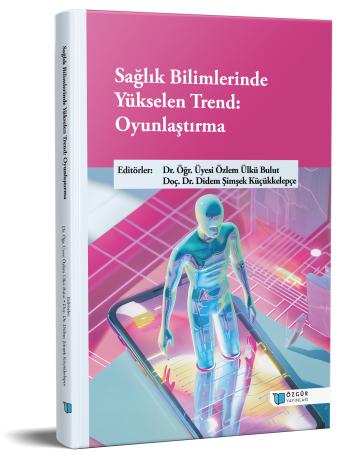
Gamification in Psychiatric Nursing Education
Chapter from the book:
Bulut,
Ö.
Ü.
&
Şimşek Küçükkelepçe,
D.
(eds.)
2025.
Rising Trend in Health Sciences: Gamification.
Synopsis
In recent years, educational technologies have advanced, and creative methods have begun to replace traditional approaches in education. One such method is gamification. Gamification increases students' motivation to learn by ensuring their active participation in the educational process. It involves components such as points, badges, leaderboards, simulations, and mobile applications. In psychiatric nursing education, gamification tools can be used to help students gain experience before clinical practice, particularly in developing communication skills, making clinical decisions during crises, and managing stigmatizing attitudes toward individuals with mental disorders. Through structured feedback and simulated patient interactions, students can improve their therapeutic communication skills and gain confidence in handling unpredictable situations. Additionally, gamification allows students to repeatedly practice their skills in a non-threatening environment, helping to reduce anxiety and hesitation. This enables students to gain experience and confidence before encountering real patients in clinical settings. Despite its benefits, the implementation of gamification requires strategic planning, instructor training, and ongoing evaluation to ensure alignment with learning outcomes. Moreover, insufficient technological infrastructure, the high cost of technology, and educators’ limited knowledge in psychiatric nursing education present barriers to the use of gamification in learning.
This chapter discusses the definition of gamification and its application in psychiatric nursing education. It also addresses the advantages and disadvantages of using gamification in education, along with related ethical considerations. It is recommended that nursing educators enhance their competencies in integrating new technological methods into teaching.

